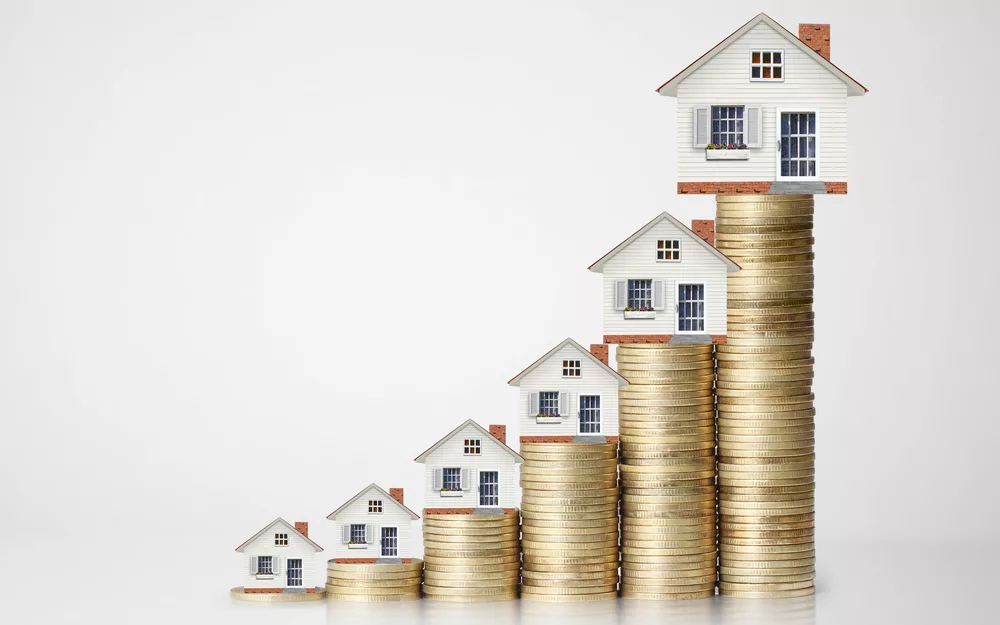
Investing in real estate and managing rental properties can be lucrative. However, success in this field requires careful planning and attention to detail. That’s why a vacancy checklist for property investors is essential to stay on track and organized.
According to Statista, 42% of U.S. renters opt for single-family homes for the comfort and spaciousness it offers. As a property investor, understanding the different aspects of managing and maintaining rental properties is crucial for sustained success, especially when handling vacancies.
In this blog, we will explore a the vacancy checklist for property investors, the importance of vacancy rates to real estate investors, and how a Las Vegas property management company helps you streamline your process and maximize your returns.
Zero Vacancy Period: A Real Estate Investor and Property Manager Priority
Achieving zero vacancy periods is the ultimate goal. It signifies continuity of rental income, portraying a financially rewarding venture. Here are the strategies to attain consistent tenants and maximize the potential of your investment property.
No vacancy period – 0 days
Achieving no vacancies is like hitting a home run in real estate. It means your rental property never sits empty, rent flows in continuously, making for a robust bottom line.
When there is a strong local demand, it also means an excellent property manager is at the backend. Thus, tenants are often lined up before the previous ones move out.
Low vacancy period – rents within 10 days
Landing on low vacancy periods isn’t just luck—it’s strategic positioning. If you see units filled within ten days, it shows your rental offering hits the sweet spot of price, amenities, and location sought by renters in Las Vegas or Henderson.
You should learn that every quick turnover comes from being proactive. This includes pricing based on market analysis and maintaining properties to attract top tenants quickly.
Medium vacancy period – up to 21 days
Vacancies stretching to three weeks can signal room for improvement but aren’t alarming if they happen occasionally. Sometimes, external factors beyond our control extend these gaps between tenants.
Real estate investors should use medium-length vacancies as an opportunity for renovations or upgrades that later boost appeal—and reduce future downtime significantly.
High vacancy period – more than 21 days
Breaching past the twenty-one-day mark without securing new tenants should raise red flags about potential issues with the property or its management strategies.
From my journey through various markets, including Las Vegas, consistent high vacancies usually call for re-evaluating marketing tactics or reassessing competitive rental prices—a lesson many seasoned investors agree upon.
Extreme vacancy period – an undetermined time
An extended or extreme vacancy lasts indefinitely, leaving landlords without a clear end date for when someone will sign a lease again.
This typically indicates serious flaws in how the property is presented online (poor photos can kill interest) or severe market miscalculations.
Being on the Faranesh Real Estate and Property Management team has shown me how powerful targeted remodeling can be. We listen to what tenants want, then we remodel based on their feedback. This strategy really works—it turns empty spaces into sought-after properties.
Why Vacancy Rates Are Important to Real Estate Investors

Vacancy rates are crucial indicators for investors in various real estate markets. They provide valuable insights into the health and performance of a specific property type or real estate market as a whole.
Here are several reasons why vacancy rates are important to investors:
Revenue and Cash Flow: Vacancy rates directly impact a property’s revenue and cash flow. High vacancy rates mean that a significant portion of the property is not generating rental income. Investors, especially those relying on rental income for their cash return, monitor vacancy rates closely to assess the property’s financial viability.
Market Demand and Supply: Vacancy rates reflect the balance between supply and demand in a particular real estate market. Low vacancy rates generally suggest high demand and a scarcity of available properties. Investors can use this information to identify potentially lucrative markets where rental properties are in high demand.
Rental Market Trends: Vacancy rate changes can signal rental market shifts. Increasing vacancy rates may indicate a weakening rental market, potentially leading to lower rental prices and reduced property values. Conversely, decreasing vacancy rates may suggest a strong rental market with the potential for higher rental incomes and property appreciation.
Risk Assessment: Vacancy rates are essential for assessing investment risk. High vacancy rates pose a risk to investors as they may struggle to cover property expenses, including mortgage payments and maintenance costs. Understanding and predicting vacancy rates helps investors make informed decisions and mitigate potential financial risks.
Investment Strategy: Real estate investors often use vacancy rates to fine-tune their investment strategy. For instance, a market with low vacancy rates may present opportunities for property appreciation and higher rental incomes. On the other hand, in a market with high vacancy rates, investors might focus on strategies like property improvement or marketing efforts to attract tenants.
How the Vacancy Rate Formula Affects Other Real Estate Metrics
Vacancy rates are more than just a measure of unoccupied properties. They’re like the pulse, giving insights into the health of your real estate investment. But this metric doesn’t work in alone—it is influenced by other key performance indicators (KPIs).
Based on the U.S. Census Bureau Quarterly Residential Vacancies and Homeownership 3rd quarter report of 2023 reveals the national rental vacancy rate increased to 6.6%, surpassing the rates in the same quarter of 2022 and the second quarter of 2023.
The vacancy rates in rental housing can impact various real estate metrics. An elevated rental vacancy rate may indicate oversupply, potentially lowering rental prices and affecting property values. These trends, in turn, influence investment strategies, property values, and overall market health.
Therefore, understanding this formula allows investors to maximize profits and ensure the long-term sustainability of their investments. This is through strategic decision-making grounded on solid data analysis provided by experienced local managers, such as the experts at Faranesh Real Estate and Property Management, who specialize in ensuring stress-free ownership experiences.
Getting Help from a Local Property Manager
Managing rental properties in Las Vegas or Henderson may seem challenging, juggling tenant requirements and property upkeep. However, it doesn’t have to be that way. Hiring a professional property manager in Henderson can help you focus on growing your real estate portfolio while they handle the details.
A seasoned property management team excels at keeping vacancy rates low and profits high. They understand the unique market trends of Southern Nevada and how to attract reliable tenants quickly. These pros have covered everything from marketing your properties effectively to vetting potential renters.
They also ensure rent rolls in on time every month, saving you from those awkward collection calls.
And when something breaks? A good manager has relationships with trusted contractors who can fix issues fast without breaking the bank. So whether it’s routine upkeep or emergency repairs, you’re all set.
How do you calculate vacancy rate for rental property?

According to Investopedia, you can calculate the vacancy rate by multiplying the number of empty units by 100 and then dividing the result by the total number of units.
What is a typical vacancy factor?
A common vacancy factor hovers around 5-10%, signaling healthy tenant turnover and demand balance.
What is the formula for vacancy loss?
Vacancy loss equals potential gross income minus actual earned income due to unoccupied units.
How do you present a real estate investment opportunity?
Showcase location perks, crunch numbers on returns and expenses, highlight unique selling points to grab investor interest fast.
Final Thoughts
Let’s recap. Your vacancy checklist for property investors is your game plan to keep those rentals bustling and profitable.
Remember, a good vacancy rate can mean the difference between thriving and surviving in this game. You’ve learned that short vacancies are golden, while long ones can bleed you dry.
Factor in local market trends, set competitive rents, and don’t forget the power of curb appeal. It all counts.
If high vacancy rates have got you down, flip the script with swift turnovers and top-notch marketing moves.
Tackling these tips head-on? That’s how you’ll stay ahead of the curve—and cash flow positive. With professional property managers onboard, zero vacancies aren’t just a dream,they’re within reach!
Do you want to start the year with ZERO vacancy rate? Contact our team at Faranesh Real Estate and Property Management today!



